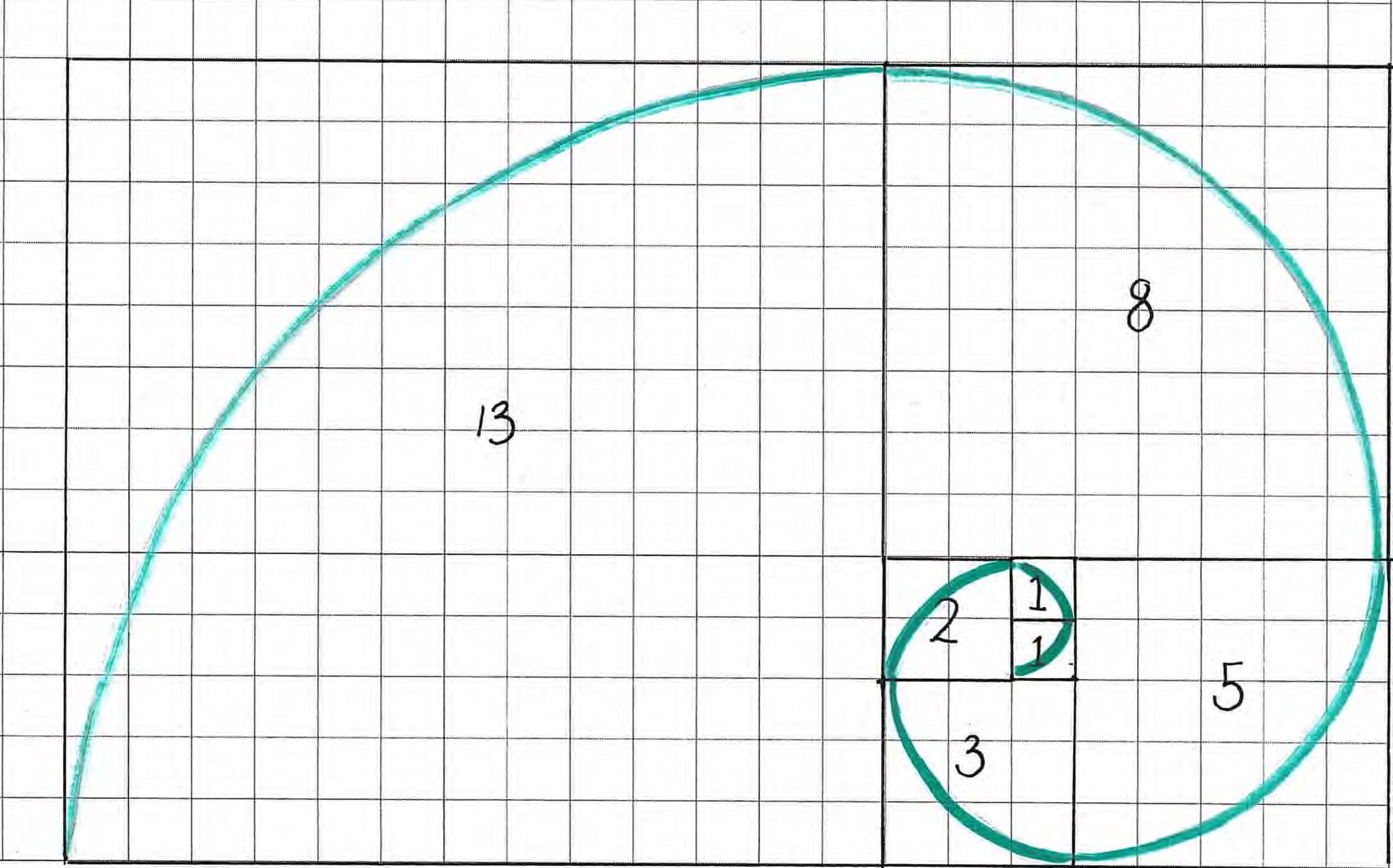Plants and flowers can offer a refreshingly new perspective on looking at number sequence and pattern.
An introduction to Fibonacci spirals
Although it may appear that the arrangement of leaves and flowers is disorganised, or even random, there are patterns everywhere in nature. The most obvious of these follows the Fibonacci sequence. This magical sequence was first described by Indian mathematicians hundreds of years ago. It was introduced to the Western world by the Italian mathematician Leonardo of Pisa (more famously known as Fibonacci) in the early 13th century. There is a linear and spiral pattern.
Each number is created by adding together the previous two and continues to infinity:
0+1=1, 1+1=2, 1+2=3, 2+3=5, etc.
The first stage in creating a spiral is to work out the number sequence - do this as a class. A more visual reference is achieved with drawing the pattern onto squared paper, as you can see below. You can then start to create the wonderful spiral by drawing a curve diagonally (as if creating a 1/4 of a circle) across each square of numbers.

Trace this pattern onto clear acetate and start looking for spirals in the garden.
When pupils know what they are looking for, they can take a clear acetate sheet and draw the spirals with a pen. A good starting point would be to look at pine and fir cones and draw the spiral starting from the bottom and up towards the top of the cone. Look for the double set of spirals - one going in a clockwise direction and the other in the opposite direction.
Go out into the garden and look at the number of petals on different flowers - do any have a Fibonacci number?
If you look closely at roses they have a Fibonacci petal arrangement. Look for spirals in plants and make sketches or take photographs to share.
Number patterns in plant families
Families of plants have the same number of petals. The rose family has 5 petals. Other less well known members of the rose family include apples, pears, quinces, apricots, plums, cherries, peaches, raspberries and strawberries - check out how many petals their flowers have, and don't be surprised to find they also have 5!
Lily family members have 3 petals - another Fibonacci number!
Symmetry in nature
The arrangement of leaves around a stem is often symmetrical, or sometimes spiral. When looking at individual leaves you can spot their bilateral line of symmetry.
Look for repeated pattern in your outdoor areas or make repeated patterns using natural materials - take photographs and make a display of them.
Shapes in nature
Identify and name shapes in nature and you have ready made multiplication material at your fingertips. Here are some examples of triangular plant parts:
Clover
Oxalis (other trifoliate leaves)
Beechnuts
Cardamon pods
A slice of cucumber
Look out for other shapes and get counting! Collect data and look for relationships between numbers by creating an exciting
Human scatter graph.